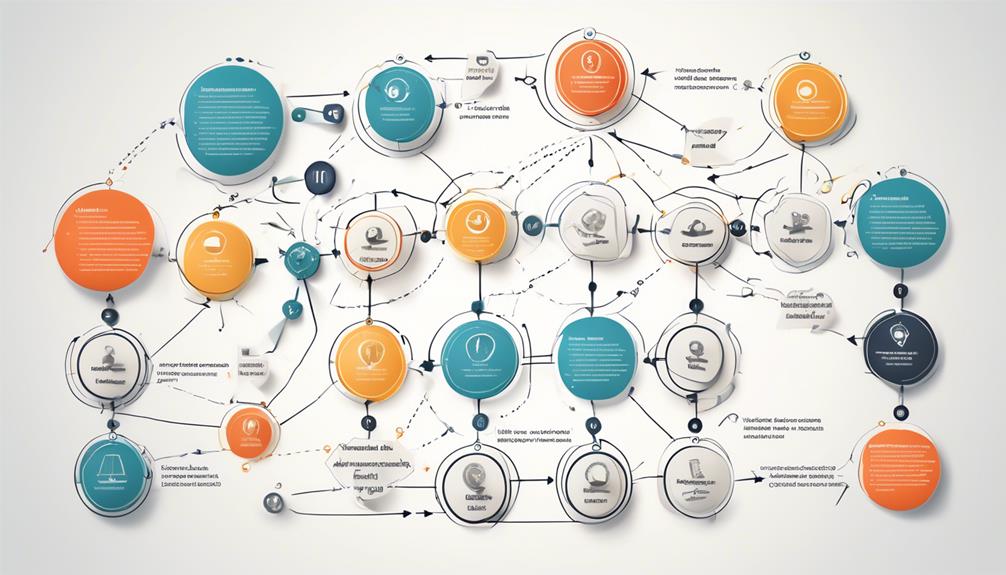Recently, a significant software bug was overlooked, resulting in a notable setback in our project schedule. This occurrence prompted us to reevaluate our approach to risk assessment in software quality assurance. While we already had thorough procedures for recognizing risks, it became evident that we needed to enhance our methods for assessing and mitigating risks.
Understanding key risk assessment methods in software QA is crucial for ensuring the reliability and quality of software systems. In this discussion, we will explore the significance of effective risk assessment, various techniques for risk identification, methods for risk analysis, and the challenges involved in risk assessment.
By understanding these key components, software professionals can enhance their risk management strategies and mitigate potential issues before they escalate.
Key Takeaways
- Risk assessment is important in software development as it helps identify and anticipate potential issues, prioritize resources effectively, evaluate risks, and develop appropriate mitigation strategies.
- Common risk factors in software QA include inadequate requirements gathering, unrealistic project schedules, insufficient testing processes, and lack of communication among stakeholders.
- Risk analysis tools and methods such as brainstorming, checklists, interviews, surveys, and failure modes analysis can be used to identify potential risks, assess consequences, and develop mitigation plans.
- Probability and quantitative risk assessment methods provide a systematic approach to measuring and ranking risks based on their probability and impact, enabling informed decision-making and resource allocation for effective risk management.
Importance of Risk Assessment
In software QA, the importance of risk assessment lies in its ability to identify and anticipate potential issues or challenges that may impact the software development process. By conducting a thorough analysis of potential risks, our team can effectively prioritize and allocate resources, ensuring that the most critical risks are addressed first.
This proactive approach enables us to evaluate the likelihood and impact of each risk, empowering us to make informed decisions and develop appropriate mitigation strategies. Through this methodical management of risks, we can minimize the negative impacts on quality, schedule, and budget, ultimately enhancing the overall success of the software testing project.
Furthermore, risk assessment supports the identification and management of various types of risks, including technical, schedule and resource, operational, business, and organizational risks. By systematically addressing these potential challenges, we contribute to the reliability and quality of the software system.
This analytical approach not only facilitates proactive problem-solving and decision-making but also ensures that the software testing project is equipped to navigate potential obstacles with precision and expertise.
Risk Identification Techniques

As we shift our focus to risk identification techniques, it's crucial to consider common risk factors and the various tools available for risk analysis.
Our goal is to meticulously document potential risks, including their names, descriptions, causes, effects, probabilities, impacts, and owners.
By utilizing methods such as brainstorming, checklists, interviews, surveys, historical data, expert opinions, and assumptions, we can create a comprehensive and accurate risk register.
This risk register will ultimately aid in the early identification of potential risks in software engineering projects.
Common Risk Factors
Through methods such as brainstorming, checklists, interviews, surveys, historical data, expert opinions, and assumptions, we systematically identify and list possible sources of software risks in the risk identification process.
Common risk factors in software QA include:
- Inadequate requirements gathering and analysis
- Unrealistic project schedules and deadlines
- Insufficient testing and quality assurance processes
- Lack of communication and collaboration among project stakeholders
Risk Analysis Tools
Using a variety of techniques such as brainstorming, checklists, interviews, surveys, historical data, expert opinions, and assumptions, we systematically identify and list possible sources of software risks in the risk identification process. This step is crucial in the overall risk assessment and management process. The information gathered during risk identification is then documented in a risk register, which includes details such as risk name, description, category, cause, effect, probability, impact, and owner. To engage the audience further, the following table provides a glimpse of the risk register's content:
| Risk Name | Description | Probability |
|---|---|---|
Throughout the risk analysis in testing, this register serves as a fundamental tool for tracking and managing software risks, guiding risk response and occurrence, and enabling the implementation of Risk-Based Testing.
Risk Analysis Methods
Let's now turn our attention to the crucial aspect of risk analysis methods in software quality assurance.
In this section, we'll explore failure modes and probability assessment as key points in our risk analysis framework.
Understanding the failure modes and assessing the probability of their occurrence are vital components in effectively analyzing and mitigating risks in software development and quality assurance.
Failure Modes
Failure Modes, also known as Risk Analysis Methods, play a crucial role in identifying potential failure scenarios within a software system and evaluating their consequences and severity. When analyzing failure modes in software testing, it's important to consider the following:
- Identifying potential failure scenarios: This involves understanding the various ways in which the software system, component, or process can fail.
- Assessing consequences and severity: Understanding the impact of potential failures aids in prioritizing and addressing critical risks.
- Developing mitigation and contingency plans: Analyzing failure modes helps in developing effective plans to mitigate the impact of identified risks.
- Improving system robustness and reliability: Utilizing failure modes analysis can lead to improved test quality and overall project risk management.
Understanding failure modes is essential for effective risk management and ensuring the quality and reliability of software systems.
Probability Assessment
Understanding failure modes in software testing is crucial for effective risk management; now, we pivot to the subtopic of probability assessment, a key aspect of risk analysis methods. Probability assessment involves estimating the likelihood of each risk occurring. This is essential for QA teams in test management to prioritize and mitigate potential risks effectively. Two main methods, qualitative and quantitative, are used to assess probability. Qualitative methods utilize ordinal scales to rank risks based on probability and impact, while quantitative methods employ numerical values for measurement. The goal is to determine the exposure or level of risk, enabling QA teams to make informed decisions about where to focus their efforts. Here's a comparison of qualitative and quantitative probability assessment methods:
| Qualitative Methods | Quantitative Methods |
|---|---|
| Uses ordinal scales | Employs numerical values |
| Ranks risks based on probability and impact | Measures risks based on probability and impact |
| Effective for quick risk assessment | Provides precise risk measurement |
Quantitative Risk Assessment
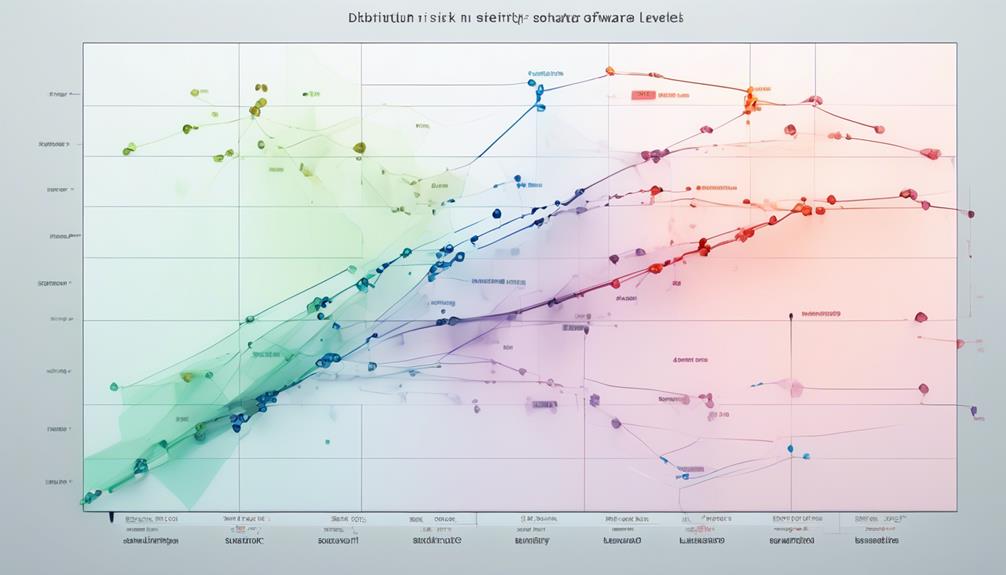
Quantitative Risk Assessment involves systematically assigning numerical values to measure the probability and impact of risks, enabling precise calculation of the exposure or level of risk. This method utilizes data and statistical analysis to calculate the level of risk, providing a quantitative assessment for effective risk management.
When considering software testing in a project, quantitative risk assessment becomes crucial for ensuring quality. It supports in-depth understanding of the potential consequences of risks through numerical measurement and analysis. The process of quantitative risk assessment enables decision-making based on relevant and quantifiable risk information, allowing for a more accurate allocation of time and resources to mitigate potential project risks.
This method helps in prioritizing risks based on their quantitative assessment, ensuring that the most critical risks are addressed with appropriate attention. By incorporating quantitative risk assessment, organizations can systematically evaluate and manage risks, enhancing the overall quality and success of software development projects.
Qualitative Risk Assessment

When evaluating risks in software quality assurance, qualitative risk assessment employs ordinal scales to rank potential risks based on their probability and impact. This method focuses on estimating the likelihood and severity of each risk and its potential consequences. It's an integral part of the risk management process in software QA, allowing teams to prioritize risks and determine the level of exposure.
Unlike quantitative risk assessment, which uses numerical values, qualitative risk assessment involves assessing risks based on qualitative measures. The goal is to create a comprehensive risk register with detailed information that aids in decision-making and planning for testing and quality assurance activities.
Risk Evaluation Criteria

When evaluating risks, it's crucial to consider various factors such as the potential impact and the likelihood of occurrence.
Our team will discuss the methods for assessing the impact of risks and techniques for measuring their probability.
These criteria will provide a structured approach to analyzing and prioritizing risks, ensuring that our risk response plan is well-informed and aligned with project objectives.
Risk Assessment Factors
The risk assessment factors, also known as risk evaluation criteria, play a crucial role in determining which risks require attention and how to effectively address them within the software QA process. These factors are essential in analyzing the impact of risks and prioritizing them for suitable actions. They assist in evaluating the cost, benefit, feasibility, urgency, and stakeholder preferences related to each risk.
By considering these aspects, effective risk response plans can be developed to mitigate the impact on the overall software QA process. The goal is to manage risks efficiently and support decision-making with relevant information.
- Cost
- Benefit
- Feasibility
- Urgency
Impact Assessment Methods
Utilizing various criteria for impact assessment, we systematically evaluate the potential consequences of identified risks to determine their severity and significance in relation to the software project's objectives and deliverables.
Impact assessment involves considering factors such as cost, schedule, quality, customer satisfaction, and organizational reputation.
By applying a risk-based approach, we prioritize risks based on their potential impact, enabling targeted mitigation measures.
This method aids in informed decision-making and resource allocation to address high-impact risks effectively.
Understanding the probability and impact of risks associated with the software project allows for a more precise allocation of testing efforts and resources.
Ultimately, the rigorous evaluation of impact assessment criteria ensures that mitigation strategies are aligned with the project's objectives and contribute to the overall success of the software development process.
Probability Measurement Techniques
Assessing the probability of risks occurring through measurement techniques is crucial for developing an effective risk response plan. When evaluating the probability of occurrence, it's essential to consider various factors such as likelihood and impact.
To achieve this, we utilize risk analysis methods that are risk-based and focus on managing risk efficiently. The probability measurement techniques employ ordinal scales or numerical values to quantify the probability and impact of risks.
These measurements aid in prioritizing risks based on their likelihood and impact, allowing for the development of effective mitigation strategies. Additionally, criteria for evaluation encompass cost, benefit, feasibility, urgency, and stakeholder preferences, ensuring a comprehensive and accurate risk response plan.
Risk Mitigation Strategies
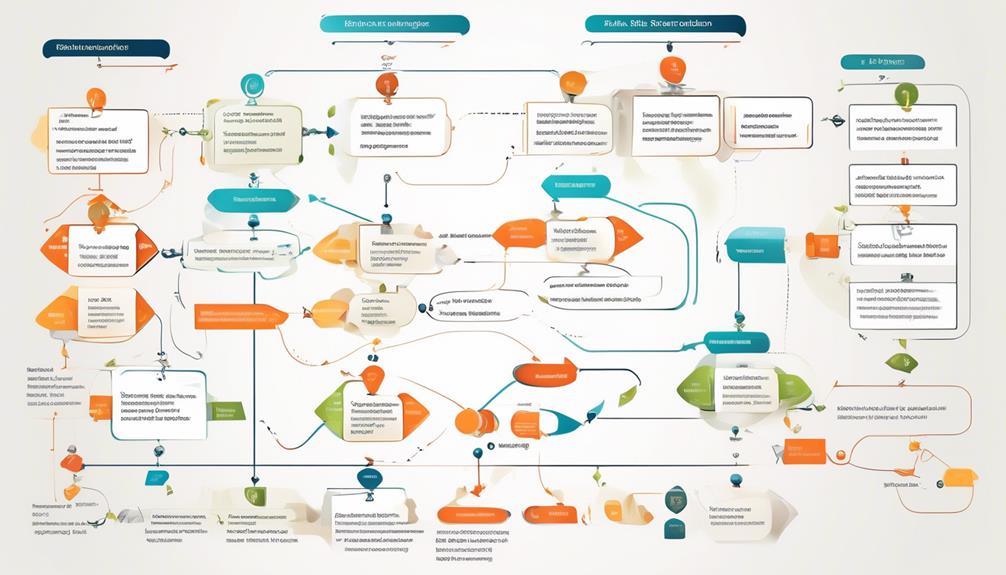
To effectively minimize the impact of identified risks in software projects, organizations employ various risk mitigation strategies aimed at reducing both the likelihood and impact of potential risks.
Risk mitigation strategies encompass a range of approaches, including risk avoidance, risk transfer, risk acceptance, and risk reduction. These strategies are integral to effective risk management and are essential for successful software delivery.
Risk avoidance involves altering project plans to bypass the risk entirely, while risk transfer entails shifting the impact of the risk to a third party, such as through insurance. Risk acceptance acknowledges the potential impact but chooses not to take further action.
However, the most common approach is risk reduction, which involves implementing measures to reduce the impact and likelihood of risks. This can include robust testing procedures, involving testing teams in risk assessment, and incorporating risk mitigation strategies into the Test Plan.
Risk Monitoring Approaches

Effective risk monitoring in software QA involves meticulous tracking and reviewing of identified risks and their response plans. It's essential to employ various techniques to ensure that risks are effectively managed and controlled.
These techniques include:
- Audits: Conducting regular reviews and assessments to ensure that risk management processes are being followed effectively.
- Reviews: Regularly evaluating the status of risks and the effectiveness of response plans.
- Reports: Generating and analyzing reports to track the performance of risk management activities and identify any emerging issues.
- Metrics and Indicators: Establishing key metrics and indicators to measure the level of risk and the effectiveness of risk response plans.
Benefits of Risk Assessment

By utilizing risk assessment methods in software QA, we can systematically identify and address potential issues, leading to improved quality, optimized testing, and enhanced stakeholder satisfaction.
Analysis in Software Testing enables the QA team to proactively manage software project risks, ensuring that resources and time are efficiently allocated to areas of highest priority. This approach not only improves the quality and reliability of software systems but also optimizes the project scope, allowing for a more focused and effective testing approach.
Furthermore, by identifying and mitigating potential risks early in the software development lifecycle, the QA team can reduce testing time and cost, ultimately benefiting the entire project.
Additionally, risk assessment supports decision-making processes by providing relevant information for problem-solving and fostering better communication and collaboration among the project team and customers.
Ultimately, the implementation of risk assessment methods in software QA increases stakeholder confidence and satisfaction by effectively managing expectations and delivering a more robust and reliable software product.
Challenges in Risk Assessment

Navigating the landscape of risk assessment in software QA presents a series of challenges that necessitate a keen understanding of potential sources, their impact, and the resources required for mitigation.
When addressing challenges in risk assessment, we encounter the following complexities:
- Diverse Sources: Identifying and categorizing the wide array of potential risks in software development projects can be intricate and multifaceted.
- Complex Evaluation: Assessing the likelihood and severity of individual risks using both qualitative and quantitative methods can be challenging due to the intricate nature of software systems.
- Weighing Factors: Determining which risks demand attention and how to address them involves balancing various factors, such as cost, benefit, and feasibility, adding layers of complexity to the assessment process.
- Resource Intensiveness: Ongoing monitoring and review of risks, particularly in complex software projects, can be resource-intensive, requiring substantial human resources and time investment.
In the realm of software QA, challenges in risk assessment are further compounded by the introduction of new technologies, time constraints, and the ever-changing landscape of user experience expectations.
Addressing these challenges demands a meticulous and adaptive approach to risk assessment and mitigation.
Software Testing Considerations
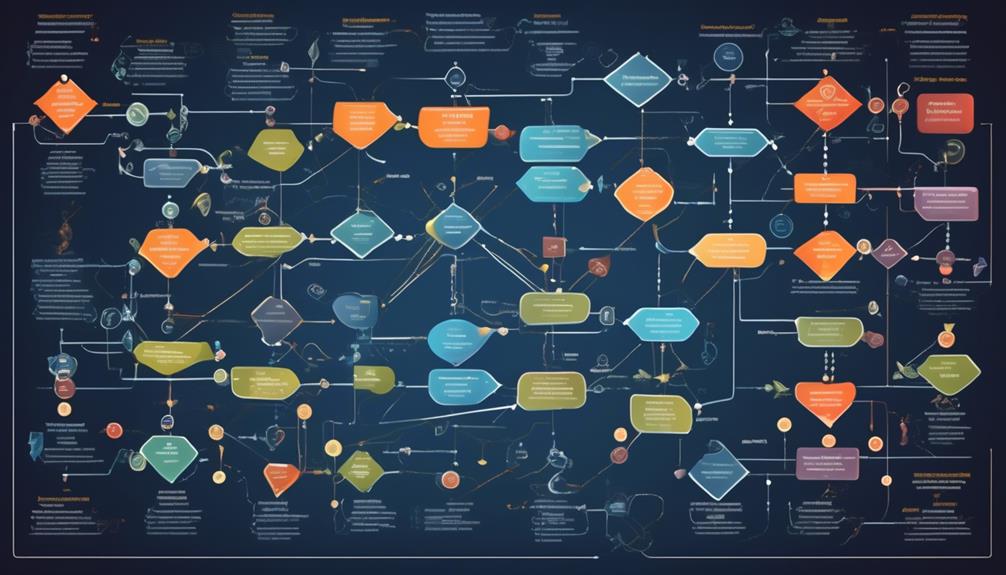
In software testing considerations, we meticulously identify and analyze potential risks associated with software development and deployment. Effective risk assessment methods are crucial for ensuring the success of QA projects. It helps in optimizing test scope, prioritizing testing efforts, and reducing testing time and cost. Risk identification in software engineering is essential for identifying potential risks early in the project, allowing for proactive risk management. Additionally, risk analysis is imperative for evaluating and mitigating risks associated with software testing, including technical, schedule/resource, operational, business, and organizational risks.
| Software Testing Considerations | Description |
|---|---|
| Test Scope | Determining the extent and boundaries of testing activities to ensure comprehensive coverage. |
| Test Design | Developing effective test cases and scenarios based on requirements and potential risks. |
| System Performance | Evaluating and testing the software's performance under various conditions and loads. |
| Project Management | Integrating risk assessment into project planning, resource allocation, and decision-making processes. |
Considering these factors in software testing considerations is integral to achieving the desired quality and reliability of software products. It allows for proactive risk management, thereby minimizing potential issues during software deployment.
Effective Risk Response

To effectively address and manage potential risks in software QA, a comprehensive risk response plan must be developed. This plan should outline clear objectives, strategies, responsibilities, resources, and timelines.
When implementing effective risk response in software projects, it's crucial to consider various strategies. These strategies include risk avoidance, risk mitigation, risk transfer, and risk acceptance. By considering these strategies, project teams can minimize the impact of identified risks and ensure the project's success.
Additionally, project managers need to be proactive in addressing critical areas and be prepared to address new risks that may arise during the project lifecycle.
Stakeholders should evaluate the cost, benefit, feasibility, urgency, and preferences when deciding how to deal with identified risks. This evaluation process helps determine the best approach for addressing and managing risks.
Effective risk response facilitates quick response and mitigation of threats to software performance. This proactive management contributes to the overall success of the project.
Continuous Improvement in Risk Management
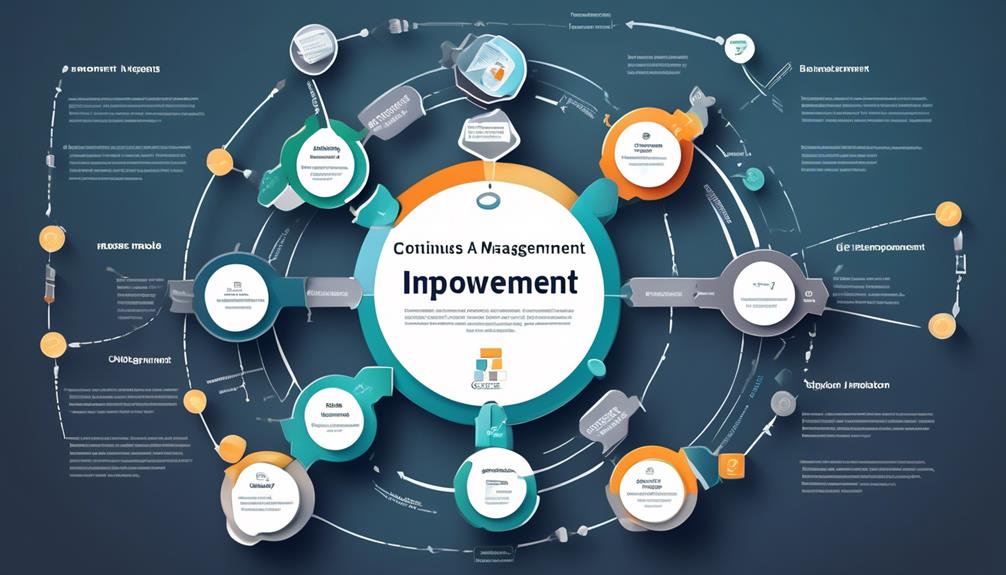
Developing a comprehensive risk response plan requires a commitment to regularly evaluating and enhancing the risk identification process to capture evolving sources of software risks. Continuous improvement in risk management involves refining risk analysis techniques to more accurately estimate the likelihood and severity of probable risks associated with software. This process also focuses on enhancing risk evaluation criteria and response strategies to ensure thorough and effective decision-making during the software QA testing process.
Furthermore, continuous improvement in risk management entails ongoing monitoring and review of risk status and performance. This is essential to ensure that risks are under control and to identify and address changes or new risks that may arise during the development phase. It also necessitates a commitment to revisiting and updating risk identification and planning processes in response to changing project objectives and new business scenarios.
Frequently Asked Questions
What Are the 5 Risk Assessment Strategies?
We assess risks using strategies like avoidance, mitigation, transfer, acceptance, and monitoring. Each strategy offers a unique approach to managing potential hazards.
By carefully analyzing and implementing these strategies, we can effectively minimize the impact of risks on our projects.
Our mastery of risk assessment allows us to proactively address potential issues and safeguard the success of our software QA processes.
What Are the 6 Types of Risk Assessment Methodologies?
We'll cover the six types of risk assessment methodologies.
These include:
- Qualitative risk assessment
- Quantitative risk assessment
- Delphi risk assessment
- Fault tree analysis
- Failure mode and effects analysis (FMEA)
- The specific context of key risk assessment methods in software QA.
Each method offers unique approaches for identifying, analyzing, and managing risks, providing a comprehensive framework for ensuring software quality and reliability.
What Are the 4 Risk Assessment Techniques?
We use four risk assessment techniques to identify, analyze, evaluate, and monitor risks in software QA.
These methods include:
- Brainstorming
- Checklists
- Interviews
- Surveys
- Historical data
- Expert opinions
- Assumptions
- Qualitative and quantitative approaches
- Criteria like cost, benefit, feasibility, urgency, and stakeholder preferences.
How Do You Assess Risk in Software Testing?
We assess risk in software testing by:
- Identifying potential sources of risks
- Analyzing their likelihood and severity
- Evaluating their impact and urgency
- Monitoring their status and response plans
This process helps us prioritize and address the most critical risks.
By using methods like:
- Brainstorming
- Checklists
- Interviews
We can effectively manage and mitigate risks, improving the quality and reliability of the software while optimizing the test scope to increase stakeholder confidence.
Conclusion
In conclusion, the key risk assessment methods in software QA are crucial for ensuring the quality and reliability of software systems.
By employing effective risk identification, analysis, evaluation, and monitoring techniques, we can mitigate potential risks and improve overall performance.
It's important to continuously strive for continuous improvement in risk management to stay ahead of potential pitfalls.
With careful consideration and consistent monitoring, we can confidently conquer any challenges that come our way.
Rick, our Software Quality Assurance Writer, is the creative force behind many of our insightful articles and course materials. His unique background in software development, fused with his natural flair for writing, allows him to convey complex QA concepts in a way that is both informative and captivating. Rick is committed to keeping abreast of the latest trends and advancements in software testing, ensuring that our content remains not just relevant, but at the forefront of the field. His significant contributions are instrumental in helping us fulfill our mission to deliver premier QA education.




